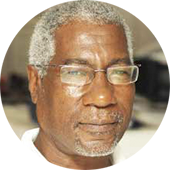
ELECTIONS excite everyone everywhere, whether for local or national government or top posts requiring people’s votes like Premiers and Prime Ministers, Presidents or Governors, Legislators and Police Chiefs, Trade Unionists and Political Leaders, etc.
Of course, such exercises are supposed to be fair and free of fear of being influenced in any way in any of the voting and counting systems that make elections the Numbers Game called ‘Democracy’ by those involved and ‘Selections’ by way of the size and effect of harmful influences.
Caribbean Community (CARICOM) elections are like all others, based as they are on European concepts of Democracy imposed on West Indian colonies after conquest and bequeathed to independent nations through Constitutions that keep their navel strings tied to the Union Jack and other European tricolour flags.
Everything about Caribbean elections is therefore a localized mirror image of how it’s done across Europe and all other former colonies in Africa and Asia, the Caribbean and the Pacific, The Americas, Australia and New Zealand.
The ‘Westminster Model’ that elects CARICOM governments and determines that ‘losers’ remain ‘in opposition’ and ‘out of power for five years’ is based on pooling of votes and statistical divisions and assessments, based on determined criteria that will legally decide who ‘wins’ and ‘loses’.
And ‘The winner takes all…’
But like everywhere else, the figures generated between elections also open the way for other unending numbers games that can please any and all who count on them.
A full year ahead of elections, pollsters and statisticians play the numbers game well enough everywhere to provide all the statistics we’ll need to come to our own conclusions.
But, over time, the experts have been able to devise mechanics and mechanisms to play numbers in such a way that they’ll bend our minds through a diabolical application of statistical demagoguery that so effective it’s virtually a veritable virus.
Peddlers of untruths masked with invisible veils fuel coloured speculation through engineered polls used by the mainstream and social media to generate headlines that attract and sell.
Thus, every election everywhere is also usually preceded by predictive polls intended to more than just inform voters of how ‘people’ think.
But, until Nominations Day, all the hype is just speculation.
As Saint Lucia’s upcoming General Elections goes, the figures are now out and the facts are only now clear for the July 26 poll.
Three parties will be contesting – one in all 17 seats, one in 15 and one 8 – with 10 women and 4 Independents among the 45 candidates.
Each party is offering women candidates with two in the four-cornered fight for Castries North; and there’s also a woman Lone Ranger among the independents – (like the two in Castries North and Castries Central) backed by one of the three parties.
The Numbers Game is being played in all respects: UWPees are hoping their party will win enough seats to get a second term; Labourites hope the SLP will win all 15 (and get a top-up from the two top independent candidates); and NDP’s Greens wish even if their party doesn’t win all eight seats, it’ll (at least) win ‘one or two’ to ‘make a presence’ — and be of bargaining value if the results are tight.
Of course, different folks use different strokes to paint their dreams; and different yardsticks to measure the likeliness of their dreams coming true.
But some do see their dreams turn to nightmares…
A lady friend who’s ‘dying to see the government’s back…’ told me last Monday she was rethinking because of ‘the number of buses’ she saw in the UWP’s round-the-island motorcade two Sundays ago.
But her daughter, a first-time voter equally determined ‘to vote for my future’ told her: ‘Doh worry Mama, because motorcades cannot vote and the minibus drivers made some good money; and the people jumping-up made-some-noise and made-some-money too…’
And there’s the counting of flags and comparison of sizes, the major candidates actually purchasing iron poles from local metals suppliers and diehard supporters risking climbing electricity and telephone poles after midnight to nail flags and posters – respectfully next to each other.
The four major party colours for Election Day being Red, Yellow, Green and Blue, Samarians are jokingly inviting each other to bet on the results according to the colour of which House they belonged to at St. Mary’s College (SMC).
But seriously, at this time, more experienced (especially re-elected) candidates are concentrating solely on ensuring they get the numbers of votes in the right boxes in the right places to ensure they secure a victory.
One of the things hardest for most candidates to understand, however, is that no matter what the numbers are, one vote is more valuable than all others: the winning one.
Local history has shown everything — from one independent candidate (a Castries businessman who lived at Pavee Road) contesting a general election in which his household voted and he failed to win a single vote after the final count, to more recent cases of candidates winning by a single or handful of votes and the losing candidate boasting he or she ‘almost won’ – as if there’s such a thing in elections.
But the other Big Number everyone’s always watching everywhere is the number of New Voters – the young people who turned 18 since 2016 and adults who’ve never voted but have been driven to make that play today.
The statisticians, accountants and lovers of facts generated by figures will offer the best equations and examples, additions and subtractions, fractions and divisions, to assess fractions between factions and offer multiplied assessments often coloured by politically-tinted glasses.
But guess what: At the end of the day, the only number that matters is always the Winning Number, which will itself spark-off another new round in the continuing count of the unending numbers game that always ultimately determines our future, to the letter!












